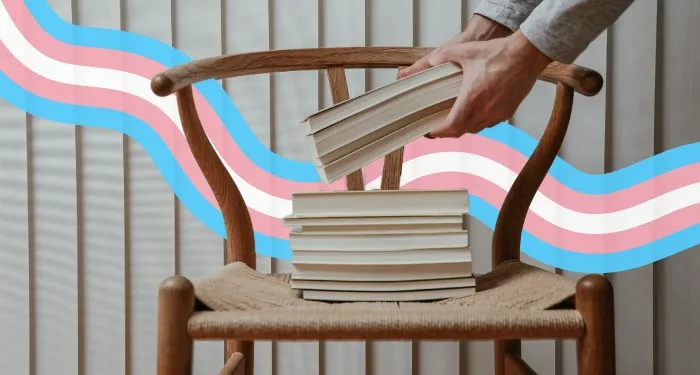Since the end of the last century, Nell Irvin Painter writes in her essay “‘This Land Is Yours,’” published in our March 27 issue, historians of many different American regions have shown in their work that “places assumed to be only and always White were not.” One of the purposes of these local Black histories has been to challenge “the delusion,” as Painter calls it, that parts of the country other than the South constitute “a land of freedom far removed from the American original sin of slavery.” Many corners of the United States are being reexamined and reimagined.
Painter’s essay focuses on two books that take this historical approach to upstate New York: Amy Godine’s The Black Woods, which tells the story of pre–Civil War Black settlers in the Adirondacks, and A Hudson Valley Reckoning, a personal history by Debra Bruno that investigates the author’s slaveholding ancestors. Painter knows the territory: for over two decades she has lived in a part of the Adirondacks that she and other locals call the North Country, where she is active in the antiracist organization John Brown Lives! (John Brown’s home and grave are in North Elba, New York.)
Painter moved to the North Country just before taking emeritus status at Princeton, where she taught American history for nearly twenty years. Her books include Standing at Armageddon: The United States, 1877–1919, the biography Sojourner Truth: A Life, a Symbol, and The History of White People. After leaving Princeton she earned a BFA and an MFA in painting, an experience she wrote about in her memoir Old in Art School.
Painter and I corresponded this week about the transformation of historical writing in the last half-century, scholarship under demagogues, and the North Country.
Sam Needleman: Why did you become a historian?
Nell Irvin Painter: I grew up in the middle of the twentieth century in an educated, left-leaning Bay Area family. My parents had met in a coup de foudre in the library of the Houston College for Negroes, which Texas had thrown together in its ultimately futile attempt to make separate look like equal. Like so many Black southerners who knew Texas was unfair, they moved to California in 1942, when I was an infant.
I grew up reading. We owned a first edition of John Hope Franklin’s narrative history From Slavery to Freedom (1947), so I knew about the southern struggles for civil rights, meaning I knew about slavery, segregation, and the centuries-long campaigns against them. I was very good at history, and I recognized that what I was being taught in my Oakland high school was a tissue of big and small lies about Great White Men, and I wanted nothing more to do with it.
I studied up, and by the time I got to the University of California, Berkeley, I could test out of the required introductory US history class. I cast about for a major—art? French?—before finally settling on anthropology as a means of studying a range of people in the world, not all of whom were White. But then my junior year abroad in Bordeaux, France, revealed the fascinating field of history. As part of the first group of students at the University of California to study abroad, I was awakened to how the meanings of the recent past differed by place. In my Bay Area youth World War II was ancient history, but France in the early 1960s was still very much postwar. The Nazis had occupied Bordeaux in 1940, and on the coast there were still bunkers looking out for marauding Germans. Cours Marc Nouaux, on which I walked every day, was named in honor of a résistant, an identity that resonated vividly at that time.
At the University of Bordeaux in the 1960s the medieval historian was Charles Higounet (1911–1988), who was educated in the Annales school. He was particularly interested “in the pays, in the way people lived, in people in the land, more than in the aristocracy,” as the historian Jean-Bernard Marquette wrote after Higounet’s death. While my high school history class’s focus on wars had bored me, Higounet, whose course centered on the Hundred Years’ War, taught in a way that attended closely to people’s lives. When I got back to California, my senior honors thesis, while technically in anthropology, was really history, building on what I had learned in Bordeaux.
After Berkeley I joined my parents in newly independent Ghana, where we sought to help build socialism in Kwame Nkrumah’s new nation. I started graduate school at the University of Ghana, studying precolonial West African regional history. After a coup deposed Nkrumah in 1966 we lefty Black Americans had to scatter, but I continued to study history, first at UCLA and then at Harvard. Though I earned two degrees in visual art in the 2000s, I still adore history and read it and write it for pleasure.
How have the tasks of US historians changed since you entered the field?
In everyday life in departments and institutions, I fear that American social habits still afflict historians who are Black, female, and/or Other Other, especially in the slights and burdens that wear us down and keep us exhausted, in part because we are called upon to assuage the same slights and burdens as they affect our students and colleagues. Such hidden costs are nearly everywhere in American life. And the times we’re in now impose fear. The Trump era’s attack on diversity is already cramping academic lives and scholarship; this MAGA meanness of spirit is doing lasting damage.
But so much has changed for the better! Historians now have access to new and rich archives that simply did not exist decades ago. They can ask and answer questions we could hardly have imagined in the twentieth century. Elite White men have lost their place as the unquestioned protagonists at the center of history. Women’s history, sneered at in the 1970s, long ago went mainstream. The labor history of the 1980s, which focused attention on poor and working people, has influenced historical writing as a whole.
Black history has changed dramatically since the 1970s, when authors struggled to reach readers beyond The Journal of Negro History, now The Journal of African American History. Back then graduate students, Black and non-Black, were routinely discouraged from writing in Black history, and what they wrote was subject to an ignorant and bigoted reception or simply buried. For example, Mary Frances Berry’s My Face Is Black Is True: Callie House and the Struggle for Ex-Slave Reparations (2005) should have received not only wide readership but also serious legislative attention. When Berry, now eighty-seven, was a prolific young historian, the prizes she should have received were silently but effectively reserved for White men.
I’ve been out of a history department for twenty years, so I no longer keep up with current scholarship or listen to other people’s lectures and job talks. I seldom attend the profession’s annual meetings and so only encounter historical writing haphazardly, through book reviews, webinars, and podcasts like Claire Potter’s Why Now? I’ve read wonderful books by serving on prize committees. In 2021 I chaired the nonfiction jury of the National Book Awards, where I encountered the work of the environmental historian Lucas Bessire and the American historian Tiya Miles. I know there are many more historians whose freshness would delight me, but my approach to historical scholarship now is not methodical.
Still, I have noticed changes so that now American history incorporates Native Americans and the environment. As Ned Blackhawk showed in his marvelous The Rediscovery of America: Native Peoples and the Unmaking of US History (2023), Native American history does much more than bring important historical actors to the fore. It reorients US history away from the coasts and toward the interior, where millions of Americans of all backgrounds live and work. The same is true of Bessire’s Running Out: In Search of Water on the High Plains (2021). People and events in regions beyond the Northeast now appear more often in American historical scholarship than they long did. These two books are also good examples of a trend among university publishers: presses like Yale, North Carolina, Harvard, and Princeton have been publishing books by scholars aimed at general readers and are succeeding in reaching a wider audience.
Historians are also now able to imagine and write in interdisciplinary ways. Miles’s recent books, All That She Carried: The Journey of Ashley’s Sack, a Black Family Keepsake (2021) and Night Flyer: Harriet Tubman and the Faith Dreams of a Free People (2024), are good examples. They go beyond historical text to include photographs and drawings, the history of craft, poetry, and environmental concepts. Miles invites historians to write with their eyes, ears, and hands at the ready. She is one of many historians who have emerged from a stiff methodological chrysalis into open air.
What about the local histories by Godine and Bruno makes them relevant or even urgent to readers who live far from upstate New York?
Most of the United States—probably much of the developed world, in fact—shares a salient demographic assumption with the Hudson Valley and the Adirondacks of northern New York: that there’s no Black history there. And even places with acknowledged Black histories most likely have pasts that are not known but that would enrich their historical narratives once unearthed. Every place holds historical knowledge, because so often what we think of as history is a collection of snapshots that can miss the events and people that came before, people who lived there but have now largely disappeared. Local history rewards research everywhere, and it bonds people today to the places where they are, giving them a stake in local people and local politics.
I would like to ask you a question that my colleague Nawal Arjini asked your former colleague Peter Brown in an interview: What, if anything, can or should historians do to prevent their scholarship from being conscripted into demagogic agendas?
I can’t imagine my scholarship being conscripted into demagogic agendas, but I also could not have imagined what my country has become in 2025. I could not have imagined the United States aligning itself with Putin’s Russia and against the European allies that it has stood beside for eighty years, since World War II. I could not have imagined that the agenda of the United States would be so demagogic.
I could imagine the purposeful misconstruing of my biographical writing. At the moment I’m finishing a new book, Sojourner Truth Was a New Yorker, and She Didn’t Say That. Already my campaign against the easy and flattening phrase erroneously ascribed to her—“a’rn’t I/ain’t I a woman?”—has brought accusations that I’m trying to tear Sojourner Truth down. The reasoning behind the accusation seems to be that any tampering with the popularly recognized version of her equals an attack on her historical importance and greatness.
To my mind this accusation is rooted in two widespread assumptions about the way race, particularly Black race, works in US society. First, the greatness of great Black people must be easily grasped, as in just one phrase. Second, a great Black person must represent all Black people in a way that feels authentically Black to most Americans. Both assumptions are antithetical to biography, which probes an individual life. At the same time I know that stressing a Black historical figure’s individuality runs up against the commonplaces of American race ideology. The assumptions of American race make each Black person into a unit of Black race, while each White person is assumed to be an individual. To depict a Black American as an individual courts an accusation of treason to the race, of Black self-hatred, of wanting to deny the importance of race. This I am not doing, but I can imagine hearing just this kind of censure.
What can I do to head off such accusations? Write clearly and in detail—quoting Truth’s own words about her life and its meanings over time, to stay as close as possible to her life—and remain careful about generalization.


















 English (US) ·
English (US) ·